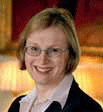Articles in the GNSS Category

A GAGAN (GPS Aided Geo Augmented Navigation) is an Indian SBAS (Satellite Based Augmentation System) intended to provide accurate and reliable navigation information for all phases of flight over the Indian FIR (Flight Information Region) and in the adjoining areas applicable for safety-of-life operations meeting the performance requirements of ICAO. The implementation of the GAGAN program is being realized through the following two phases…

There are some countries trying to develop their own GNSS system. Is there any race? If yes, how appropriate and where would it lead to? Here are some views
“Well first of all there is the issue of robustness and putting all your eggs in one basket – that is one aspect and a major legitimate concern. The other, is a matter of national pride. In Europe there is a feeling that GPS dominates things…

Today, the civil positioning, navigation, and timing (PNT) community needs a clear and concise statement of PNT needs. This statement should incorporate all aspects of PNT services and all applications and modes of PNT use. With such a statement, providers of PNT technology and services will be better able to plan for, develop, and implement their PNT services. While I offer my thoughts on this need for the United States, the arguments…

For interplanetary missions, the determination of S/C state vector (position and velocity) is required both for navigation purposes and science operations. The main error sources affecting S/C tracking data are the solar corona and the interplanetary plasma, which could be removed by using the multifrequency link technique between the probe and the ground station [1]. Once solar plasma noise has been removed…

GPS has revolutionised positioning, navigation and timing (PNT) over the last twenty-fi ve years. During this period, we have come to rely on GPS to an unprecedented extent and GPS has gone from being an interesting research and development topic, to a professional niche market maker, to becoming the fourth utility and now to today’s mass market phenomenon…

GPS/INS integrated navigation system has been a candidate of integrity monitoring system since an inertial sensor could improve performance of the fault detection and exclusion (FDE) functions. Japan Aerospace Exploration Agency (JAXA) has developed several GPS/ INS systems called GAIA (GPS Aided Inertial navigation Avionics) for over ten years and succeeded in automatic landing of unmanned experimental…

The GNSS Research and Application Centre of Excellence (GRACE), is a cross disciplinary centre providing cutting edge research, high calibre teaching, and business support services to the GNSS community. In October 2009 GRACE will move into its own state-of-the-art purpose built centre. A ground breaking ceremony took place on the 11th of November 2008, and construction of the centre is underway at the University of Nottingham Innovation Park (UNIP) on the Jubilee campus of the University of Nottingham.
It will be the only facility in UK dedicated to the development of downstream applications and services using GNSS. The European Union has estimated the market for downstream applications and services to be worth in excess of £230 billion by the year 2025. Supporting the University of Nottingham in this venture which will have an investment of £9.2m is the East Midlands Development Agency (EMDA), one of the nine regional development agencies in England. EMDA was established in 1999 with the primary goal to increase the economic growth of the East Midlands region.

Oil was first commercially exploited in the North Sea in the 1960’s. Production is underpinned by regular and reliable helicopter operations enabling the movement of staff and equipment to and from the shore. However, the North Sea environment is challenging for rotorcraft operations from many perspectives, not least its remoteness from the shore, the exacting weather conditions and the changeable nature of rigs…

GNSS (Global Navigation Satellite Systems) is a common acronym encompassing all existing and planned satellite-based navigation systems. So far, the US-built GPS dominates the scene completely, but the Russian GLONASS is approaching around-the-clock global operational status, and other systems are being developed (the European Galileo, the Chinese Compass/Beidou and the Indian IRNSS). There are also augmentation…

Current global navigation satellite systems (GNSSs) [1] are based on signals lying within the L-band of the radio-navigation satellite service (RNSS) spectrum. Since the need for more systems and signals is emerging, new alternative frequency resources are needed. In particular, the C-band frequency portion is envisioned as an option for future GNSSs…









 (5.00 out of 5)
(5.00 out of 5)